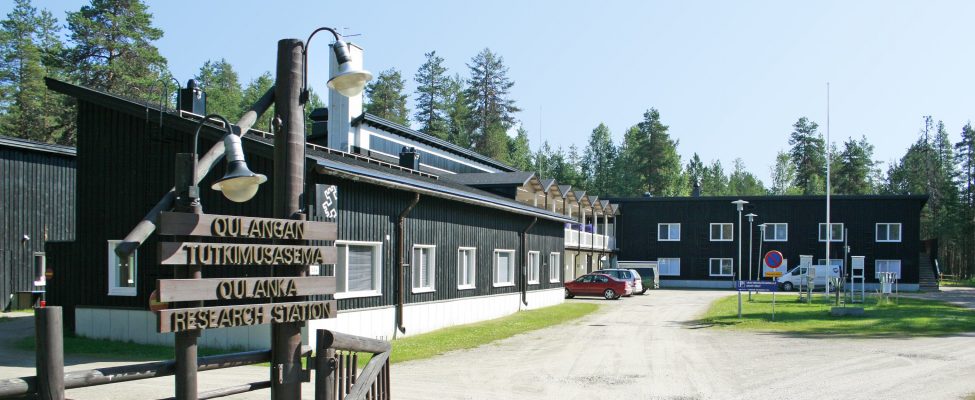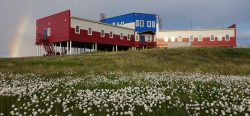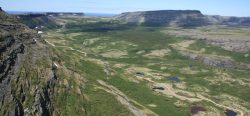Contact Details
STATION NAME AND OWNER
Oulanka Research Station was founded in 1966 It belongs to the Infrastructure unit of the UofO, and is a regional unit of the University of Oulu in Kuusamo, Finland.
LOCATION
Oulanka Research Station is situated in the river valley of Oulanka within the Oulanka National Park (66°22’ N, 29°19’ E, 166.5 m a.s.l.). The station is c. 25 km south of the Artic Circle, 13 km west of the Russian border, about 280 km northeast of Oulu, and 55 km north of Kuusamo.
HISTORY AND FACILITIES
Oulanka Research Station operates and offers access to visitors throughout the year. The station is a primary location for field courses at Oulu University (especially biologyThe study of life and living organisms (from the Greek word 'bios' meaning life).... More and geographyThe study of the Earth, such as places, landforms, people and processes by which the Earth changes over time. Geography is divided into two main branches: human geography and physical... More) with 5-8 different courses and roughly 1500 person-days per year. The station lies in the heart of the Oulanka National Park at an optimal distance to various field research locations. Being a multi-disciplinary research station, Oulanka is open to almost all kinds of research activities. The station has 74 beds, three well-equipped laboratories, an auditorium, classrooms, workshops, and high-speed internet.
A scenic webcam is broadcasting live from the nearby Kiutaköngäs. Follow this link to see what is happening in Oulanka right now.
BIODIVERSITY AND NATURAL ENVIRONMENT
Oulanka National Park is a northern biodiversityBiological diversity. The many and varied forms of life on Earth (collectively known as biota). As well as diversity of species (species diversity), there is also diversity within populations of a... More hot-spot, thanks to the calcium-rich bedrock, varying topography, and large environmental gradients within a small area. Moreover, it has historically been at the cross-roads for movement of northern, southern and eastern species. Unlike most of Finland, the local rivers drain towards the Northeast, i.e. to the White Sea.
GENERAL RESEARCH AND DATABASES
The study area includes the towns of Kuusamo, Posio, Taivalkoski, and Salla, and covers an area of roughly 100 × 200 km. Most of the research activity is concentrated in and around the Oulanka National Park. Historically research has been focussed on animal and plant ecologyThe study of living organisms in their environment, including where they are found and how they interact with their physical environment and with each other, for example through food webs.... More as well as geographyThe study of the Earth, such as places, landforms, people and processes by which the Earth changes over time. Geography is divided into two main branches: human geography and physical... More. Recently sociological aspects have been included as well. Oulanka has a broad range of long-term data series available for researchers. These include both, biological and physical/ chemical datasets, and many of them have been collected since 1966. The datasets cover timeseries on meteorologyThe scientific study of the atmosphere and its phenomena, especially in relation to weather and weather forecasting.... More, water chemistryThe study of matter at the atomic and molecular scale.... More of streams and lakes, phenologyThe study of the timing of recurring natural events such as bud opening, egg laying or the arrival of a migratory animal. Many living organisms have defined life cycle events... More, ice cover, snow cover, active layerThe layer of ground above permafrost that is subject to annual thawing and freezing.... More depth, air pollution as well as different plant and animal species, etc. Oulanka also offers a recently acquired, extremely comprehensive (70 x 90 km) set of high-resolution aerial photographs covering three different eras, i.e. the early 1950s, the early 1980s, and c. 2005. The EcoClimate experimental platform has been built during the last 8 years or so. It concentrates on climate changeAccording to the United Nations Framework Convention on Climate Change, climate change is change in the climate of the whole Earth or a region of the Earth that is believed... More research and reindeer grazing effects. There are lots of res. groups working on different aspects, all the way from groundwater to the trees and everything in between (GHG, eddy, manual and automatic chambers, plant communities, root minirhizotrons, snow, soils, soi & groundwater microbiology etc.).
HUMAN DIMENSION
The nearest village with stores and services is 13 km away while the ski centre of Ruka is 30 km away. Outside the villages and towns, the area is sparsely populated, but tourism is an important activity with associated impacts on nature. In addition to tourism, forestry and mining are the other major human impacts in the area.
ACCESS
Oulanka Research Station can be reached by car, by bus or by plane to Kuusamo (55 km from the station) year-round.





















